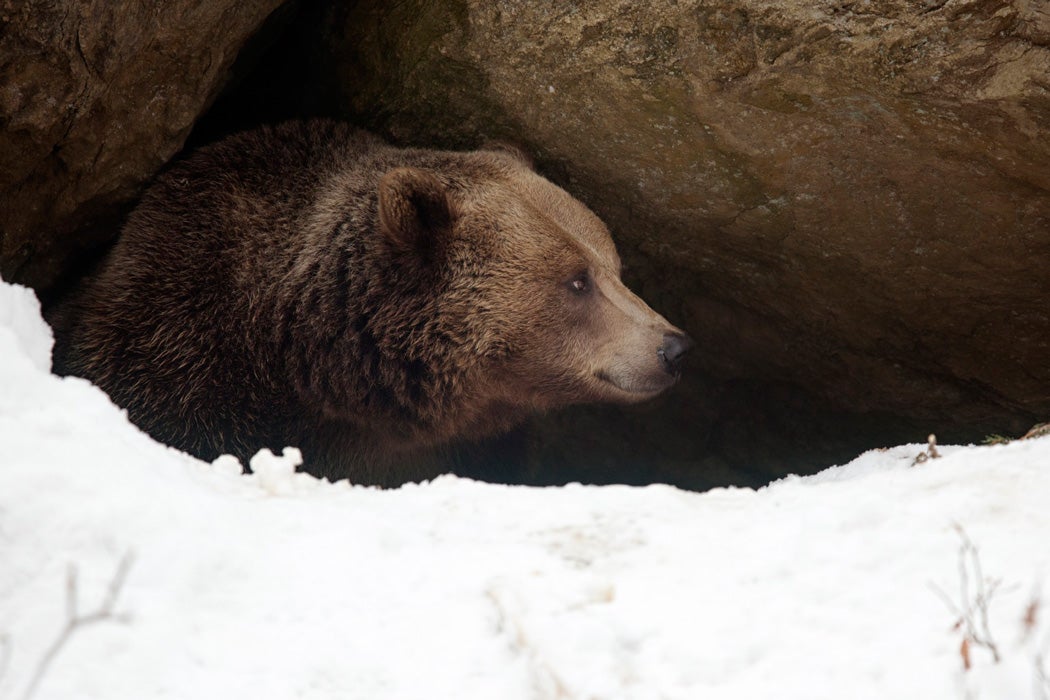This time of year, as cold weather sets in, many of us wish we could curl up into a ball and hibernate until spring. Much more than sleep, true hibernation is impossible for most animals, including humans and other primates. We have to be content to shiver as our bear and squirrel neighbors hibernate the winter away. How do they do it?
Bears are arguably the champions of winter rest. Eric Hellgren reviews 30 years worth of information on bear hibernation in the journal Ursus, and it turns out that hibernating bears have a lot of physiological issues to solve, for example, nourishment.
Bears, unlike other hibernating mammals, do not eat at all for a period of up to 7 months, storing up fat reserves in the summer and fall. (Ground squirrels, in contrast, rouse to eat at intervals.) Properly bulked up, bears will primarily burn fat for energy, but even without sufficient fat, they can still hibernate by cannibalizing skeletal muscle. Bears conserve their fat reserves during hibernation by lowering their body temperature a few degrees, but seven months is a long time. Other hibernators may lower their body temperature close to the freezing point!
The bears’ long dormancy poses other physiological problems. For one, bears do not expel waste for the entire seven months. Most animals would be dead from urea poisoning, but bears’ kidney function barely (or should it be bearly?) budges. It’s unclear how, but apparently bears recycle the by-products of protein breakdown into new proteins and amino acids directly in the blood stream, bypassing urea formation. One speculation is that urea actually is briefly formed but immediately secreted into the gut where bacteria convert it into CO2 and ammonia. These are then exhaled and reabsorbed for processing into new proteins.
Impressed yet? Any one of these problems would kill a human. The last hurdle is just as amazing: bears do not lose any bone mass during hibernation, despite months of inactivity. It seems that bears accomplish this by continuing to produce new bone to match the rate at which bone is lost. In most mammals, bone is lost as a matter of course, but replaced just as fast. However, prolonged inactivity signals to the body to reduce new bone formation, resulting in atrophy—a problem for humans with prolonged illnesses or astronauts, for example. Bears have found a way around this problem, and understanding exactly how has huge implications for medicine.
The list of physiological wonders is not complete. Bears must still retain blood chemistry balance despite radical alterations in metabolism and other systems, and there are still other unanswered questions. Bears go into hibernation inactive on a reproductive level, but somehow emerge physically ready to mate. Nobody knows how. The actual physiological triggers of hibernation are also unknown. As the bears hibernate, the world moves on around them, creating crucial questions about how environmental contaminants might impact a hibernating bear’s physiology. On the whole, though, the process is truly amazing, and somewhat envy-inspiring.







